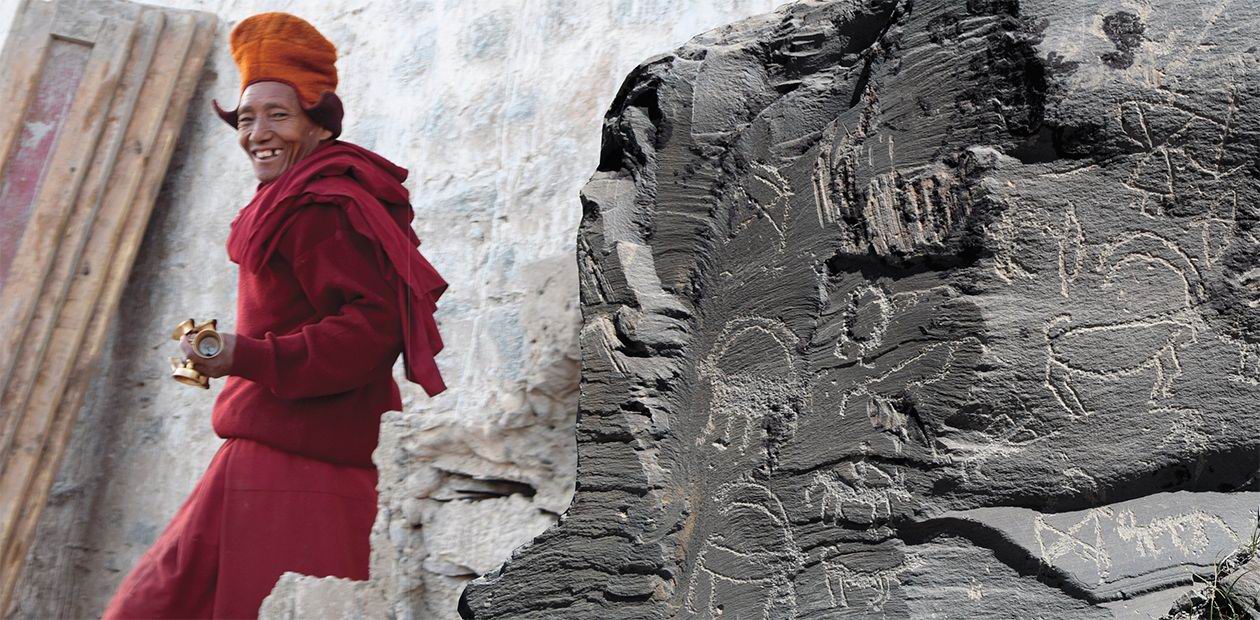History on Rocks
Zanskar is a little-understood and, even today, hard-to-reach area in Lesser Tibet (Ladakh) on the territory of modern India. These two interrelated circumstances do attract researchers, primarily archaeologists, to this vast highland region. Although Zanskar had always lain off the beaten track—the well-known routes connecting Ladakh with Central Asia, India, China and Kashmir—this land was not isolated from the outside world from the times of antiquity. This fact strikes out most prominently in petroglyphs, which provide today the only information source available to researchers about the ancient history of this region. In 2019, Russian researchers discovered in Zanskar a new archaeological monument—rock images dating back to various historical eras: from ibex images in the style of the Bronze Age to mantras and Buddhist symbols of the Early Middle Ages. The early images revealed a great thematic and stylistic likeness between the petroglyphs of Zanskar and Central Asia: Mongolia, Tyva, Altai, Kyrgyzstan, East Kazakhstan, Xinjiang, and the Pamirs. Given a certain degree of originality of the rock art styles and themes in each of these regions, this likeness may speak of a common lifestyle and religious ideas shared by all Central Asian peoples of ancient times
Under any skies,
man needs
concrete symbols
to stick to eternity
(Giuseppe Tucci. Journal
of the 1935 Western Tibet Expedition)
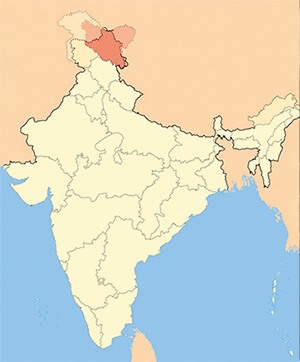 The incessant need to leave a mark in the places where man lives is a characteristic feature by which man stands out from the animal world. Striking evidence of this fact comes from petroglyphs, or images on rocks. To be fair, these rock images bear a certain likeness to the signs deposited by animals marking the borders of their territory. The desire to claim, or appropriate, a piece of space has persisted to this day—recall the struggle for territory. Still, no matter what motives had driven the ancient man to leave its first “signature” on rocks, it is unlikely that they differed drastically from those forcing the modern man to do the same thing. Recall the unforgettable “Kisa and Osya were here” from the The Twelve Chairs, a satirical novel by the Soviet authors Ilf and Petrov.
The incessant need to leave a mark in the places where man lives is a characteristic feature by which man stands out from the animal world. Striking evidence of this fact comes from petroglyphs, or images on rocks. To be fair, these rock images bear a certain likeness to the signs deposited by animals marking the borders of their territory. The desire to claim, or appropriate, a piece of space has persisted to this day—recall the struggle for territory. Still, no matter what motives had driven the ancient man to leave its first “signature” on rocks, it is unlikely that they differed drastically from those forcing the modern man to do the same thing. Recall the unforgettable “Kisa and Osya were here” from the The Twelve Chairs, a satirical novel by the Soviet authors Ilf and Petrov.
These indelible signs of human presence may appear in the most unexpected and hard-to-reach places, such as mountain passes, banks of rivers, sea coastlines, remote mountain valleys, or deserts. That is, in any places, should there be a proper surface. Man was asserting its presence everywhere, leaving marks that many generations of scientists have been trying to interpret, relying on their own ideas, and their fantasy has truly no limit. Popular versions include hunting cults, myths, epics, shamanistic mysteries, scenes from everyday life, etc.
Of course, mankind will keep on with their attempts to understand the meaning of ancient images, especially since in many parts of the world, rock art remains an ongoing tradition. It seems that somewhere, someone may still remember why people did that in the past. The famous explorer of Central Asia Karl Jettmar, a professor at Heidelberg University, wittily called the petroglyphs that he discovered and studied along the Indus “the Silk Road hotel book.” Perhaps, this is the best of all the known definitions relating to specific monuments.
Petroglyphs, eternal witnesses of the path
Petroglyphs are, first of all, signs painted or engraved on rocks. Sometimes, however, these signs become a real work of art. When a gifted person created a rock image, an unforgettable figure or scene emerged, an unattainable example to follow. These images, however, are much fewer in number. In any era, there were much more people desiring to leave a mark on rocks than there were talented artists. But the style was being created by both of them…
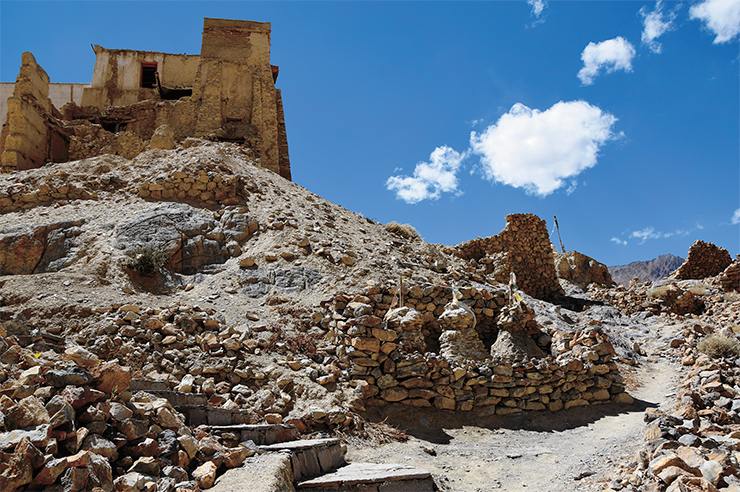
Although we unlikely ever find a definite answer to the question what these images meant for people at the time of their creation (it was only their creators who knew it), we can still ask ourselves what they mean to us today. Answers to this question do exist. Modern scientists value petroglyphs because they marked the paths of ancient trade routes and nomadic migrations, military campaigns and conquests, journeys of caravans and lone travelers, pilgrims and fugitives… These stationary posts embody motion, an endless stream of people. Petroglyphic layers are akin to cultural ones—it often happens that one and the same group of boulders may bear images separated by millennia, i. e., belonging to completely different epochs.
Petroglyphs mark paths that stretch across vast spaces in different directions. They mark developed lands, sacred places, and secluded shelters. They tell us about beasts, birds, and fish, which played so crucial a role that their images were engraved on rocks. Petroglyphs also tell us about people who explored the highlands of Central Asia. The routes taken by those people—petroglyphs prove that their journeys were real—appear stunning and unbelievable for us today as we belong to a different culture and civilization.
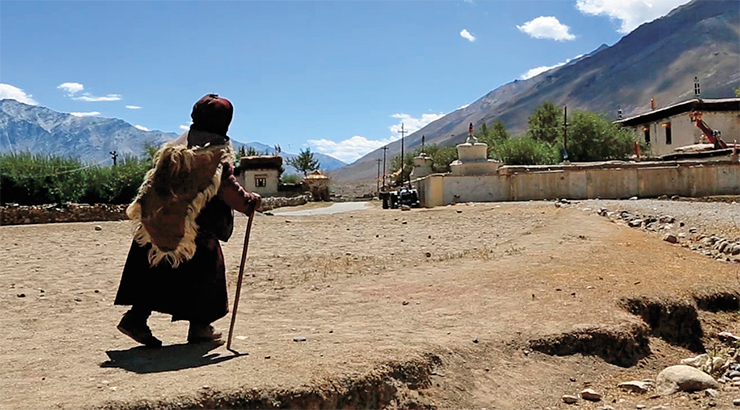
Petroglyphs are usually studied in an inextricable connection with archaeological sites, being themselves undoubtedly regarded as such sites. In these most typical cases, archaeologists use materials from settlements and burial grounds to date and interpret rock images. However, in some cases petroglyphs are the only evidence of ancient history. Like it happened in Zanskar.
Ladakh, a crossroads place
Zanskar, the southernmost part of Ladakh, a historical and geographical area in India, located between the Kunlun Mountains in the north and the Himalayas in the south, has always lain off the beaten track of trade routes and pilgrim trails. A place too hard-to-reach and not particularly luring, this land has always been little-known and obscure.
Few people know that the first Russian traveler in Ladakh was not the famous Nicholas Roerich but the well-known Russian artist Vasily Vereshchagin. In 1875, he came closer to Zanskar than anyone before but never really visited it. This journey gave birth to several masterpieces, painted with ethnographic accuracy, a signature of this artist. One of his paintings—Posthumous Monuments in Ladakh—retained the appearance of brightly colored chortens (chorten is the Tibetan word for stupa, a Buddhist religious building); another one depicts the still flourishing Hemis Monastery. The images of Tibetan people, men and women in traditional clothes, could have been made today—one can still see in the villages of Ladakh old women with animal skins thrown over their backs for protection against cold wind.
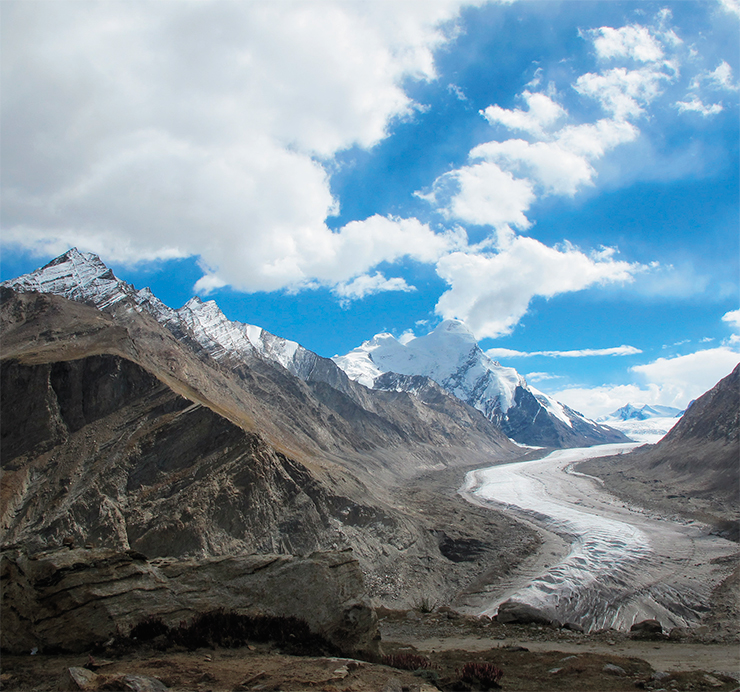
Half a century later, Nicholas Roerich’s expedition passed through Ladakh on their way to Hetian, but he, too, did not mention Zanskar. The artist left remarkable travel notes and paintings depicting the Lamayuru Monastery, the Royal Palace, and the Castle of Ladakh. Of particular interest to us is his painting Rocks of Ladakh (1933). In the foreground of a mountain landscape, one can see boulders covered with ancient drawings that depict ibexes and hunters in exactly the same manner as the numerous Ladakh petroglyphs, and not only them. In his notes on rock images, Roerich pointed out their similarity with many other rock images that he had seen in the neighboring highlands and even captured in his Lahul Stones. “These rock images,” Roerich wrote, “are widespread in Ladakh and neighboring highlands, even in the Sanju Oasis, on the northern slope of the pass. Here, in Chinese Turkestan, glossy brown rocky surfaces again show the light silhouettes of the same archers and ibexes with huge steep horns, the same ritual dances, circle dances, and processions. These are indeed harbingers of migrations of peoples” (Roerich, 1925).
One of the sons of Nicholas Roerich, Yuri (George), an outstanding orientalist, believed that the ibex images “belong to the primitive animistic Tibetan cult, usually called Bon. Ibexes are very popular in the ancient Mongolian cult of fire and are associated with fertility. Apparently, these rock images belong to the common ancient religious period of Inner Asia” (Roerich, 1994).
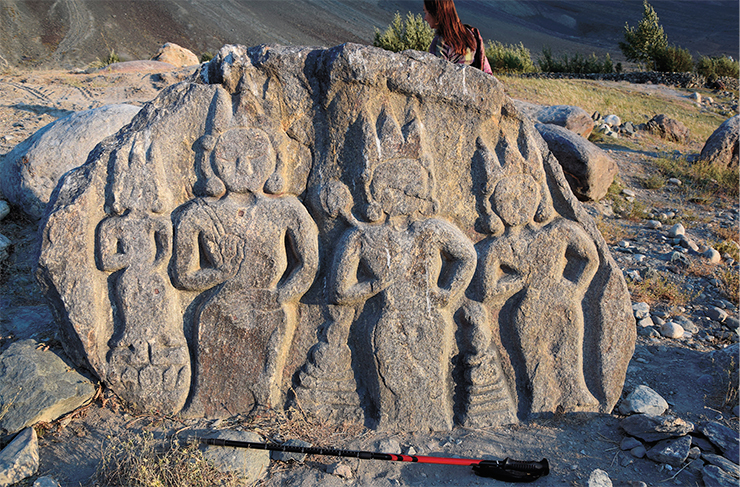
Eye-witnessing rock art across the vast expanses of Central Asia directly along their expedition routes (which covered not only Tibet, Ladakh, and Turkestan but also Mongolia and Altai), rather than studying it from publications, as it mostly happens today, the Roerichs—the father and the son—came ahead of their time by making conclusions that are still relevant today. These conclusions concern the similarities of rock art on this vast territory and the predominance of ibex images and respective hunting scenes, a phenomenon that they attributed to the “common ancient religious period of Inner Asia.”
Yuri Roerich’s diaries, articles, and reports were all collected and published in one book entitled Tibet and Central Asia. In this book, the scholar endeavored to explore all the aspects of how Tibet relates to the Asian nomadic world. In many of his conclusions, he relied on written sources – “… the ancient connection that once existed between Tibet and the rich nomadic world of Inner Asia… is repeatedly mentioned in the historical chronicles of China.” This concerns such peoples as the Xiao Yuezhi (the Lesser Yuezhi; some researchers believe that the Pazyryk people were Yuezhi) and the Xiongnu. The former retreated from their habitats to the nomadic territories of the Tibetan Qiangs (this event could have happened in the 3rd century BCE) and soon became “Tibetized,” i. e., their language, clothing, and food became similar to those of the Tibetans. As to the Xiongnu, The Book of the Later Han says that they stroke an alliance with the Qiangs and jointly raided the Chinese lands, which are dated back to the first centuries of the current era.
In subsequent years, researchers continued to accumulate and systematize materials related to the petroglyphs of Central Asia, but their conclusions remained the same as those made by the Russian scholars during the 1923—1929 Central Asian Expedition. This is not surprising because, being an artist himself, Nicholas Roerich could see better than anyone else the stylistic similarity of images separated by thousands of kilometers, and the expedition followed these ancient routes to prove the very possibility of these migrations. Yuri Roerich spoke many languages and dialects, including Tibetan and Mongolian, Sanskrit and Hindi, which is why the scholars not only could read the previously inscrutable ancient texts but also communicate directly with those people whom ethnographers call informants. The information obtained directly from the local population had formed that unique scholarly foundation upon which Yuri Roerich built his conclusions about the deep spiritual community of the Central Asian peoples in antiquity, which manifested itself in identical symbols. In this case, the images on stones.
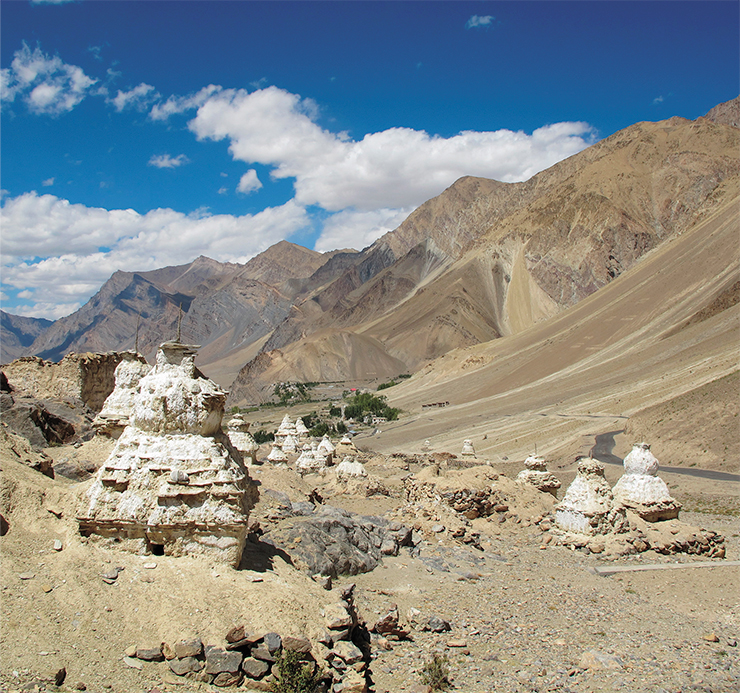
It took almost a hundred years for this hypothesis, which rested upon the Roerichs’ intuition, unique experience, scientific knowledge, and talent, to be confirmed through a careful study of monuments in this vast region by many prominent researchers—because “what is obvious to the eye is not enough for science” (Lem, 1961).
Nowadays, the number of rock images discovered and documented throughout Central Asia and Siberia has been growing rapidly. For example, during the implementation of the Ladakh rock art project in 2006—2007, nearly 150 rock art sites were identified; 15,000 rock images were documented and added to a database; and another 5000 images were surveyed (Bruneau and Vernier, 2013).
It should be noted that alongside stone industry items and ceramics, petroglyphs are, in terms of quantity, one of the most abundant archaeological sources. There are tens of thousands of rock images. This is the case where the amount of detailed information is so huge that it appears impossible to digest. Petroglyph studies have branched out into a separate field of archeology and set out on a path to improve their methods (capturing, analysis, dating). Nevertheless, petroglyphs have not become less mysterious; the quantity of data has not transformed into quality; and the repeatedly improved capturing technique has not made the images more comprehensible.
“Everything in Zanskar I found near to perfection” (Michel Peissel, 1979)
Zanskar has become the place of our choosing to continue our research in Central Asia because throughout Ladakh, it is the least studied area where the traditional culture has survived. Our choice was also considerably influenced by Michel Pessel’s book, which the French traveler wrote after he visited this land in 1976. His account of the Zanskar journey presents the impressions of an “enchanted wanderer,” all the more valuable because this was not his first journey in the Himalayas as he had travelled across Mustang and Bhutan. Nonetheless, Zanskar became a special place for him: in all the Himalayas there was no more inaccessible refuge than that “lost valley” surrounded by mountains (Pessel, 1979).
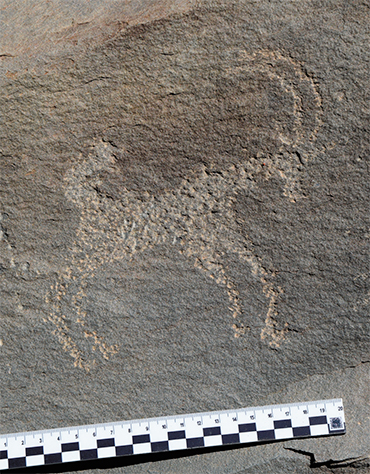 Although Zanskar has now become accessible to tourists, it is still a “lost valley.” Pessel wrote about the many monuments he had encountered on his way: chortens, petroglyphs, statues. All of them serve as landmarks for us today. But his journey is only one single route in the vast Zanskar ocean… Ruined citadels and palaces, chortens and statues are still awaiting their explorers.
Although Zanskar has now become accessible to tourists, it is still a “lost valley.” Pessel wrote about the many monuments he had encountered on his way: chortens, petroglyphs, statues. All of them serve as landmarks for us today. But his journey is only one single route in the vast Zanskar ocean… Ruined citadels and palaces, chortens and statues are still awaiting their explorers.
Another reason that inspired us to explore Zanskar came from the accounts of the French archaeologist Henri-Paul Francfort, who studied rock art in Ladakh and Zanskar in 1990. In an article summarizing the results of his works, he wrote: “A preliminary study of petroglyphs in Ladakh and Zanskar opens a new chapter in the ancient history of these regions, connecting them to the vast domain inhabited by the steppe peoples of the 1st millennium BC. Ancient people of the Himalayas maintained relations, by ways which remain to be discovered, with the “empires” of Achaemenid Persia through the Indus valley and with China of the western and then eastern Zhou. These relations are unquestionably attested yet cannot be clearly explained. Therefore, we can bet that surface archaeological observation as well as excavations in these regions will yield other Pazyryk finds, as the arid conditions favor the conservation of organic matter” (Francfort, 1990, p. 24).
This unexpected reference to Pazyryk finds meant a lot for me at that moment because it was exactly in 1990 that we first excavated the Pazyryk burials on the Ukok plateau in the Altai Mountains, where we discovered the most highland (2500 m above sea level) burials of this culture. When examining the Ak-Alakha 1 mound, which had proved not only to be “frozen” but also untouched by looters, we found a burial of two noble warriors accompanied by horses. Although the mummies of the men did not survive, we retrieved an unprecedented abundance of objects made from organic materials. Among those were wooden decks, unique clothing items, felt blankets with colorful appliqués, carved wooden decorations for horse harnesses, weapons, and many more. Most importantly, all of those riches were undisturbed…
Once again, like it happened back then in 1929, when the Pazyryk mounds were first discovered, archaeologists envisioned a lost world rising to their view. It is no secret that archeology deals only with a minor part of material culture, the one that reaches us in an imperishable form, whereas the most part of this culture, embodied in organic materials, usually disappears. It is only on a rare occasion that circumstances concur to give rise to a phenomenon like the Pazyryk one. The most striking example is the Xinjiang burials. However, while in the Altai Mountains, it was cold and ice that served as a protector of ancient organics, in Taklamakan it was the arid climate and sandy soil.
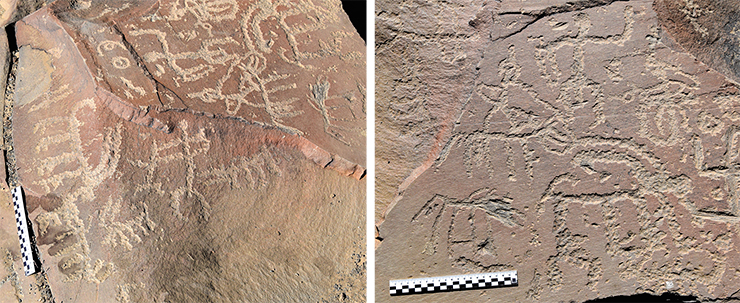
Polosmak N. V. A Trail That Leads to Zanskar // SCIENCE First Hand, February 10, 2017. https://scfh.ru/en/news/a-trail-that-leads-to-zanskar/
Francfort proffered a suggestion that the climate of Ladakh could have contributed to the preservation of all organic items in ancient burials. This is possible, of course, but where are these ancient burials? As of now, the possible locations of ancient burials on the territory of Zanskar remain hypothetical because no archaeological excavations have ever been carried out there.* Right now we stand at the very beginning of a very long journey.
“A journey of a thousand li begins with a single step” (Lao Tzu)
Today, petroglyphs are, in fact, the only evidence of the ancient history of Zanskar. Those few (no more than 20) of the well-known sites where rock images were found clearly indicate that at least from the Bronze Age, this region, like Ladakh as a whole, had been part of the world of the Central Asian nomads. That world extended all the way to the Altai Mountains, where the Lesser Yuezhi of the Chinese chronicles might have lived, and to the Mongolian steppes, where the nomadic Xiongnu Empire confronted the Han. For many years, we have been conducting archaeological studies of the monuments attributed to these peoples, the results of which served as yet another reason to encourage a new search for causal relationships between peoples and cultures…
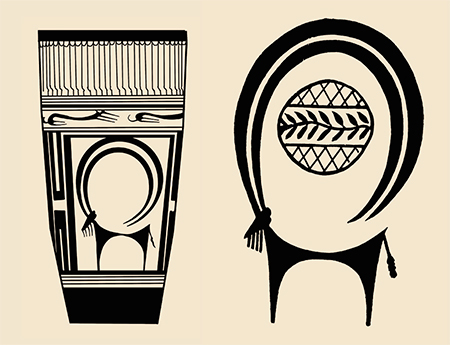 Of course, nothing like the “frozen” Pazyryk burials of the Altai Mountains will be found in Zanskar. However, an important part of the ancient local culture, represented by objects made from organic materials, could indeed have survived at yet unknown sites, and their excavation may reveal absolutely new pages in the ancient history of High Asia.
Of course, nothing like the “frozen” Pazyryk burials of the Altai Mountains will be found in Zanskar. However, an important part of the ancient local culture, represented by objects made from organic materials, could indeed have survived at yet unknown sites, and their excavation may reveal absolutely new pages in the ancient history of High Asia.
Each new place where petroglyphs are found may provide new information. Therefore, the search for rock art sites will continue. However, there are tens of thousands of known images that have been documented with maximum accuracy, calculated in percentages and described in detail, which we are still unable to read. It would be rash to assert that the currently existing interpretations of the various petroglyphs are all that we can learn from this inexhaustible historical source.
The search for petroglyphs in Zanskar has continued for a long time, with the first evidence having appeared in the early twentieth century in the studies of August Hermann Francke, a Moravian missionary. However, only 20 such sites are known to this today. Clearly, this is a small number for a region with an area of 7000 km2; therefore, Zanskar still has a status of a little-studied area, and this concerns not only petroglyphs. However, if we recall that Zanskar lies at an altitude of 3500—7000 meters above sea level and can only be accessed via one bypass road through the mountain pass Pensi-la (this road is passable six months a year at the most and usually—even less than that), we must admit that considerable progress has been achieved in recent years.
The newly discovered archaeological site lies at an altitude of 3800 m in the Khotang Thang Valley. Nearby lies the pass leading to Kishtwar, a plateau with spruce and deodar forests, located at an altitude of 1800 m in Kashmir. This route is passable on foot only; the journey takes three days.
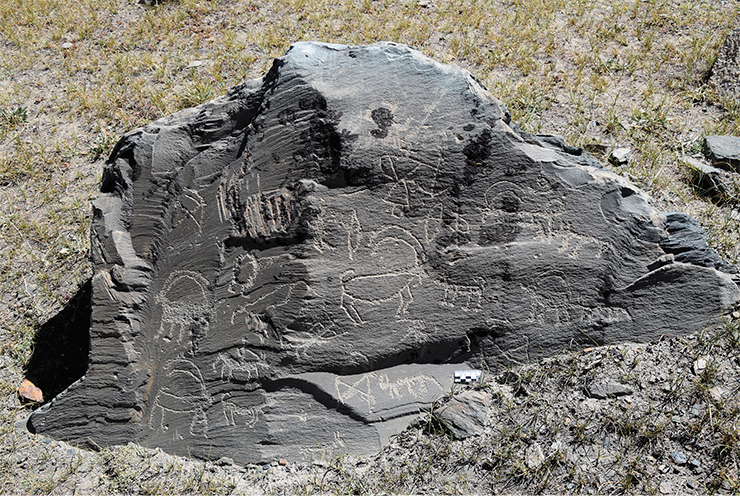
The site consists of 34 image-bearing rocks with different degree of coverage (a targeted search might reveal more such rocks). All the rocks bear traces of fractures and scratches from rockfalls, landslides, snow avalanches… Local mountains experience severe weathering, and a traveler may often encounter screes stretching for hundreds of meters. It was this randomly scattered rock debris and, more rarely, smooth boulders that bore rock art. The vast majority of the images depict an ibex. There are also depictions of anthropomorphic figures, material objects (stupas and lhatho, or multi-tiered ritual structures dedicated to tutelary deities), plants (branches or trees), Buddhist symbols (combined images of the Sun and Moon, vases), and nonfigurative images (right and left swastikas, quadrangular and floral symbols, circles, groups of dots, etc.) There are also inscriptions in the Tibetan language.
Petroglyphs are generally (and particularly those found in Ladakh) hard to date. Even the Buddhist symbols provide no definitive chronological reference since it is unknown when Buddhism first appeared in this region. Nevertheless, we have certain landmarks for a relative dating of the petroglyphs. By this I mean the similarity between the ancient rock art of the Himalayas and the rock images discovered in Central Asia, where the rock art datings are supported by archaeological finds (at present, this is the most reliable way to date petroglyphs). Stepping on this ground, we can attempt to estimate, very cautiously, the time of creation of the various images found on rocks and stones in Ladakh.
Ibex: a symbol or a hunted animal?
Like I mentioned above, the most common motif encountered on the petroglyphs is the ibex. This motif prevails not only in Ladakh but throughout Central Asia.
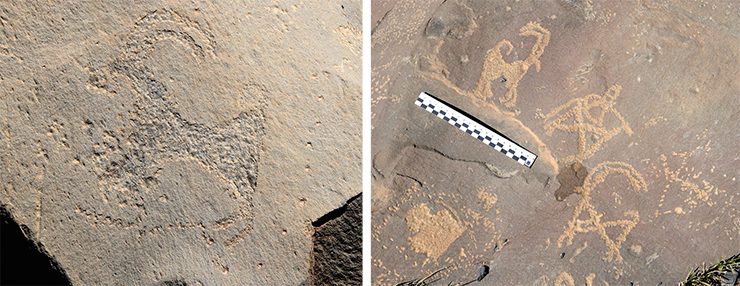
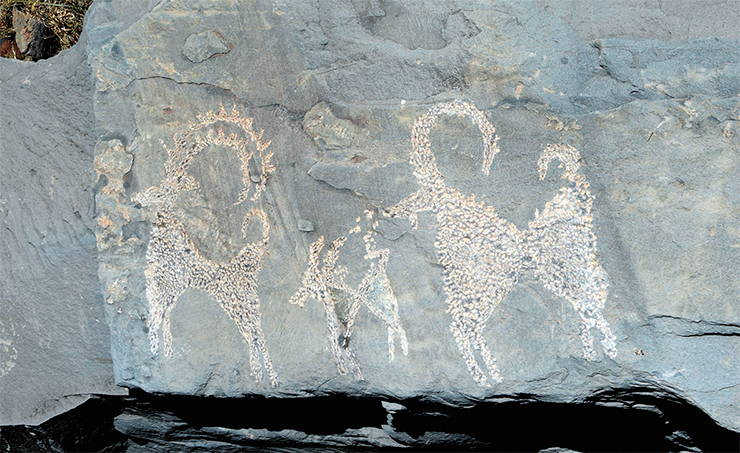
The most ancient (Bronze Age) images are those made in a silhouette-like, or bitriangular, style, which depicts the body of the beast as if composed of two triangles sharing a vertex. The rock art at the Akshow site presents amazing ibex images created in this style, which look as if copied from paintings on Middle Eastern ceramics of the Eneolithic (Copper–Stone Age) dating from the 4th to 3rd millennium BCE. It was specimens of this ceramics that served to first identify the bitriangular style in petroglyphs of Kyrgyzia by A. N. Bernshtam (1952).
Individual images in this style are also found in the Pamir, in the Gorno-Badakhshan Autonomous Region of Tajikistan (Ranov and Gurskiy, 1996). However, the bitriangular style appears to be most widespread, for unknown reasons, in the petroglyphs of Ladakh and the Upper Indus. Zoomorphic figures, and sometimes anthropomorphic ones, created in this style stand out as a distinctive feature of the local rock art or, one might even say, represent a tradition. Although researchers of petroglyphs have long arrived at the conclusion that the bitriangular style cannot be regarded as a definitive indicator of antiquity, these petroglyphs are usually dated to the Bronze Age (roughly the 3rd millennium BCE).
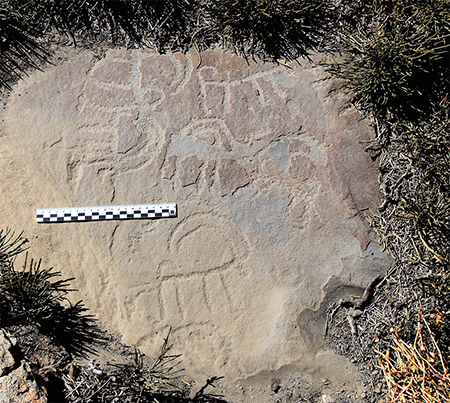 The bitriangular-style ibex images at Akshow are quite diverse. Along with figures made in the silhouette manner, there are very simplistic contours shaped as two triangles sharing a vertex. The ibex image is recognizable by its arched horns attached to one of the corners. Different images can often occur on the same surface and, judging by the patina on the stone surface, may have been created at the same time.
The bitriangular-style ibex images at Akshow are quite diverse. Along with figures made in the silhouette manner, there are very simplistic contours shaped as two triangles sharing a vertex. The ibex image is recognizable by its arched horns attached to one of the corners. Different images can often occur on the same surface and, judging by the patina on the stone surface, may have been created at the same time.
The enormous variability of the bitriangular style, as shown by petroglyphs in Ladak, Zanskar, the Upper Indus, and the Pakistani Swat Valley, suggests that this original technique for depicting the body of the beast had not only been acquired and applied to stone and rock surfaces but was also developed further, if we can say so about a transformation of a silhouette into a simple geometrical pattern. Hundreds of hourglass-shaped ibexes roam the stones of the Indus Valley and Zanskar. The variety and abundance of the bitriangular images in this region, incomparable with that in the Pamir or Kyrgyzia, may indicate that this technique had come here via the Indus Valley from its primary source—the ancient state of Elam, which once existed on the territory of the present-day Iran.
In addition to solitary zoomorphic figures, the surface of some stones bears carvings of complex scenes dedicated to the hunt for the ibex, whereby the animals are pursued by unmounted archers accompanied by dogs. In these scenes, the hunters’ arrows point at the ibexes from one side while from the other side, the beasts are pursued by wolves, their main enemy in nature.
The dog-hunt for the ibex was described by the well-known ethnographer Nikolai Kislyakov, who worked in the 1930s at the upper reaches of the Ob-Mazor River, in one of the most remote areas in the mountains of Tajikistan at an altitude of 2700 meters above sea level. He wrote, “In a narrow, gloomy valley covered with debris and monstrous piles of rocks, lies the kishlak of Hazrati-Burkh. There is nothing here to rest one’s eyes upon, only stones and stones, everywhere. No place for any living being. Only the ibex, jumping from cliff to cliff, would suddenly cause an avalanche of stones <…> Neither agriculture nor cattle breeding can feed the relatively large population. There remains only one more source of subsistence, and that is the ibex” (Kislyakov, 1984, p. 181).
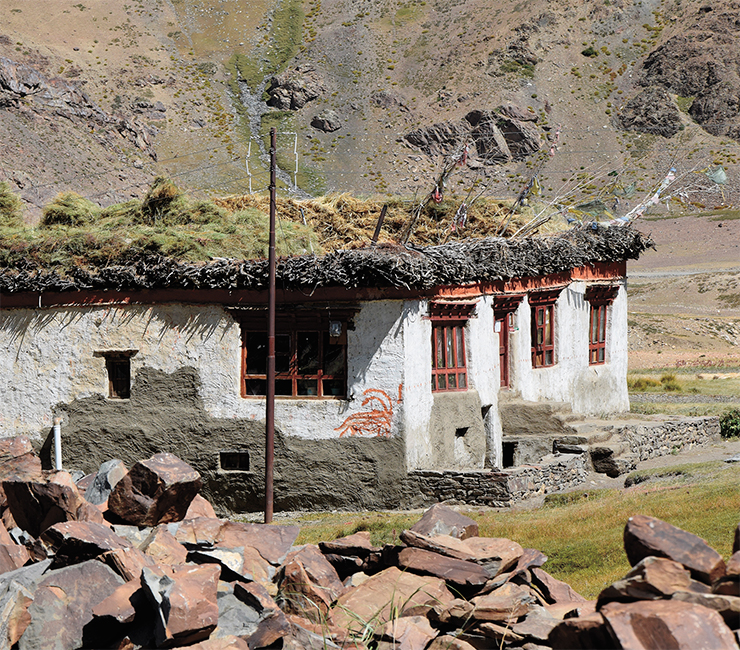
Originating in the Drang-Drung glacier, located at an altitude of 4400 meters above sea level, Dod runs through the Padum Valley and merges with Tsarap Chu to form the Zanskar River, a northern tributary of the Indus
Kislyakov also gives a description of the hunt for the ibex, based on an account that was shared with him by one of the oldest inhabitants of the kishlak, the only one who still remembered how it was. The villagers hunted the ibex in winter mostly, when the animal descends closer to the valley and its movement is hampered by the deep snow falling in the mountains. The dog played a crucial role in the collective hunt for the ibex, with several dogs rather than one being involved, as they were afraid to attack the animal alone. The place of an ibex gathering was identified in advance. About fifty hunters, each with a dog, scattered over a large area and, forming a circle, gradually crept up to the herd. Dogs were kept on a leash until a special signal was given to release them, and they attacked the animals, which were then finished off by the hunters (Kislyakov, 1934).
It is very likely that most of the Zanskar petroglyphs depict this winter circle-hunt. In any case, we see that dogs were the unfailing companions of the ibex hunters. It is also interesting that ibex habitation areas were divided between villages, and it was forbidden to hunt on foreign grounds (Kislyakov, 1937). It is possible that the ibex images on rocks and stones marked the places of animal gathering that belonged to certain groups of hunters.
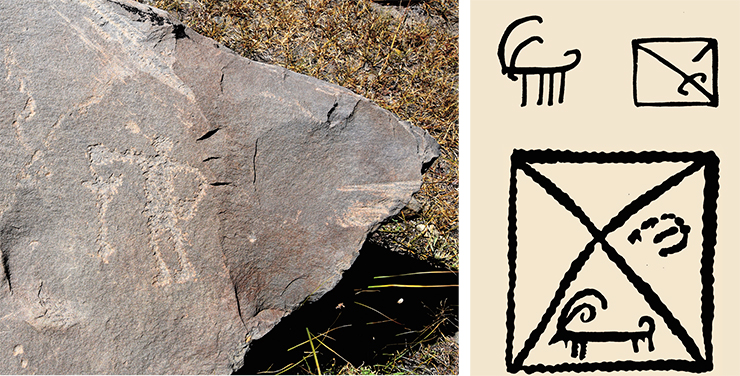
Amazing coincidences in the manifestations of attitudes towards the ibex can be traced between the valleys of Zanskar and the Pamir. Thus, the inhabitants of the Pamir kishlaks painted ibex images on the outer walls of their houses. These very primitive drawings resemble the petroglyphic ones and were made with red ocher. Kislyakov noted that “local people believe that ibex images bring luck and well-being to their homes” (Kislyakov, 1934). Similar red paintings of the ibex on the walls of houses are found in Zanskar, and the motivation is the same.
People who lived in the highland kishlaks of the Pamirs hanged ibex’s horns on mosque tombs and on their houses, both outside and inside, since they believed that the horns would bring prosperity. One can also see ibex’s horns (and those of other caprids, although the ibex was held in preference), often together with the skull, hanging above the entrance doors or windows of houses in Ladakh. Absolutely amazing ibexes’ heads, which have been transformed into moulages, are tied to the pillars of terraces in monastery courtyards.
But why are these animals held in such a high regard? Obviously, in those times when cattle breeding had not become the main occupation and agriculture yielded meager crops, it was only a successful hunt that could ensure survival when the people had exhausted all the other resources. The abundance of ibex figures in the rock art of the Central Asian mountain system suggests the importance of the ibex as a hunted animal for the people who had long settled in these severe highlands. The ibex was the main object of hunting, and therefore a symbol and personification of life itself. Thus, the struggle for life lies at the heart of all the later myths and legends…
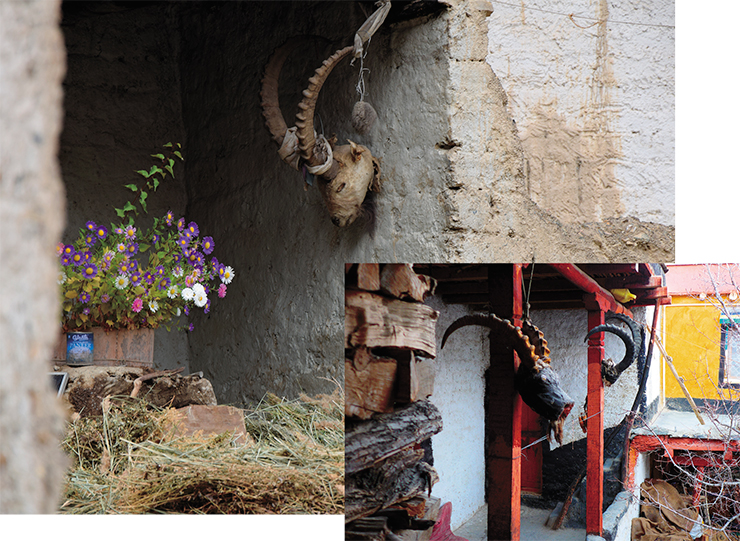
When describing the images of ibexes in petroglyphs at Langar in the Pamir, V. A. Ranov wrote that “while the images of other animals, say, oxen or horses, present signs of local differences in the petroglyphic provinces, the images of ibexes, as well as their stylistic differences, are almost the same everywhere” (2016, p. 133) (with the exception of the bitriangular style, whose specific features I have described above). This is indeed true—as shown by a comparison of the images of the Pamir ibexes with those of the upper Indus, Ladakh, and Zanskar. The close parallels in ethnographic material, coupled with the likeness, almost identity, of the zoomorphic figures and hunting scenes may also be due, in this case, to convergence, i. e., the evolutionary development of unrelated groups in a similar direction under the same environmental conditions. After all, the climatic conditions in these highland regions of the Pamir and Ladakh are very similar, and so is the lifestyle of the local population.
Compared with the ibex, anthropomorphic figures at Akshow are much fewer in number. These are very simple linear figures of males. The antropomorphs include unmounted archers aiming at ibexes; one peculiar character in a high headdress who is hunting an ibex while standing on the back of a horse; another person is depicted standing on the back of an ibex. There are also images depicting some kind of ritual ceremony. Thus, one of the stones bears a carving of a man offering a libation at an altar. Of course, all these are only sketchy images of man, which only seldom contain indications to characteristic details of the costume or weaponry.
The rock art at Akshow presents a considerable number of Buddhist symbols, unlike at the other known sites in Ladakh and Zanskar. Pilgrims used to pass along this route, and the symbols of faith coexist here with those of hunting luck and pagan cults.
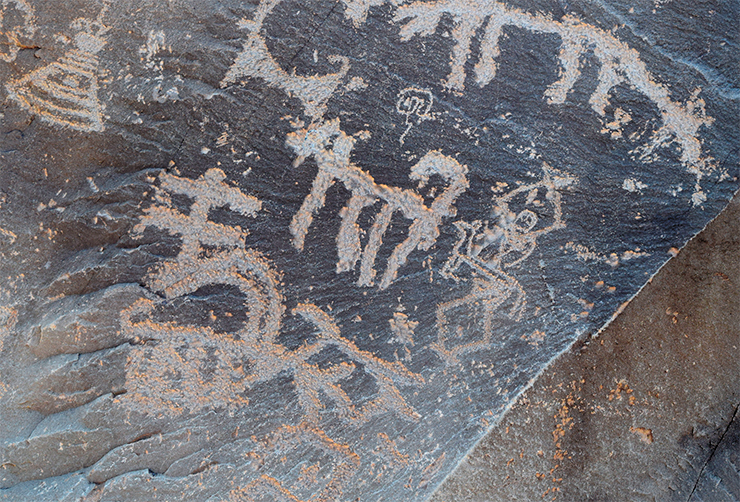
![Akshow petroglyphs. A composition imbibed with Buddhist symbolism, consisting of ibex images created in all the known styles (silhouette bitriangular, geometric, and linear), alternating with images of right and left swastikas, a small stupa, a shell, and an ascetic with a skull-like head and arms crossed and raised upwards. His body is overlapped by an image of a small animal resembling a dog, created with the same thin metal instrument as both the man himself and the shell. The surface of this stone also bears a double inscription of the Buddhist mantra Om mani padme hum and, below, the mantra Om a hum. In the Chinese Buddhist tradition, this mantra was called Sanzi zongchi zhou, or “Mantra [in] three words [that grants] absolute control [over passions]” (read and interpreted by S.Kh. Shomakhmadov, Cand. Sci. (History), a senior researcher at the Institute of Oriental Manuscripts, Russian Academy of Sciences, for which the author of this article is immensely grateful to him). All these images are interconnected and date back to the period after the “second advent of Buddhism” in Ladakh in the 8th century. Another facet of the stone shows an image a swastika-like bird (bottom left). Zanskar, 2019 Akshow petroglyphs. A composition imbibed with Buddhist symbolism, consisting of ibex images created in all the known styles (silhouette bitriangular, geometric, and linear), alternating with images of right and left swastikas, a small stupa, a shell, and an ascetic with a skull-like head and arms crossed and raised upwards. His body is overlapped by an image of a small animal resembling a dog, created with the same thin metal instrument as both the man himself and the shell. The surface of this stone also bears a double inscription of the Buddhist mantra Om mani padme hum and, below, the mantra Om a hum. In the Chinese Buddhist tradition, this mantra was called Sanzi zongchi zhou, or “Mantra [in] three words [that grants] absolute control [over passions]” (read and interpreted by S.Kh. Shomakhmadov, Cand. Sci. (History), a senior researcher at the Institute of Oriental Manuscripts, Russian Academy of Sciences, for which the author of this article is immensely grateful to him). All these images are interconnected and date back to the period after the “second advent of Buddhism” in Ladakh in the 8th century. Another facet of the stone shows an image a swastika-like bird (bottom left). Zanskar, 2019](/files/medialibrary/697/697b2c187e6e3e9ae19aa11c34d09b12.jpg)
It is not known exactly when Buddhism first came to Zanskar. Unconfirmed evidence associates this event with the times of the rule of Kanishka I, at the beginning of the 2nd century CE. During this period, Buddhism was flourishing in Kashmir, which was then part of the vast Kushan Empire, and it is not impossible that the first Buddhist preachers appeared in Zanskar at that time. Usually, supporters of this assumption allude to the “Kanishka chorten,” a peculiar stupa with an egg-shaped body near the Sani monastery, one of the most ancient monasteries in Zanskar. Rumor persistently connects this building with the name of Kanishka. However, it would only be possible to confirm or refute this assumption by studying the construction itself, for which purpose it would have to be destroyed…
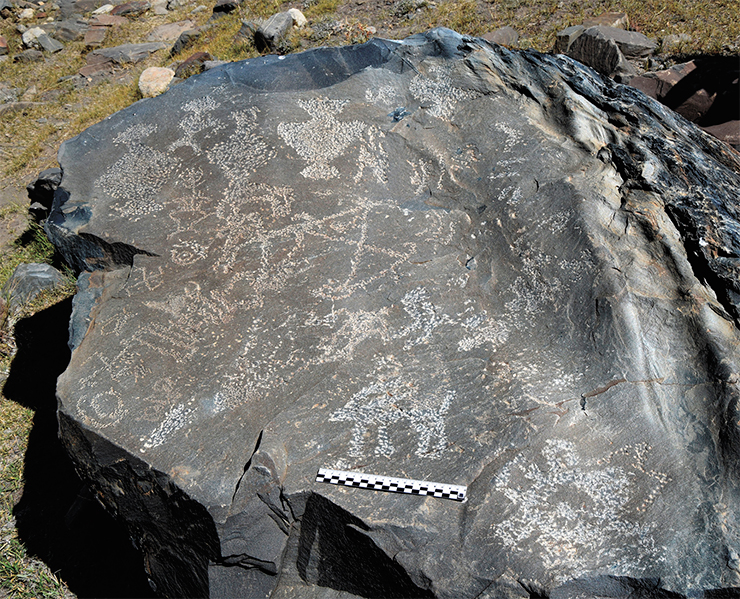
One might wonder why not use the Buddhist symbols in the rock art as a reference point since they seem to provide a sufficiently accurate chronological reference to the time of arrival of Buddhism in Zanskar. However, these symbols had not changed for centuries, and many of them had come to Buddhism from the more ancient Bon religion, thus making it difficult to distinguish an indisputably ancient layer among the Buddhist images.
Begin at the beginning and go on till you
come to the end: then stop.
Lewis Carroll, Alice in Wonderland
The Iranian world came in Zanskar in the late 4th to the early 3rd millennium BCE, bringing not only the ibex figures in a bitriangular style. Bronislav Kuznetsov, the well-known Russian Tibetologist, showed on the basis of written sources that the Bon religion, the predecessor and rival of Buddhism, appeared in Tibet under Iranian influence. The Bon religion took its origin in the pre-Zoroastrian Mazdeism of Ancient Iran of the 4th‑5th centuries BCE. This theory, no more controversial than others, can explain some interesting parallels in the material culture of Tibet and Iran, i. e., in those things that archaeology works with.
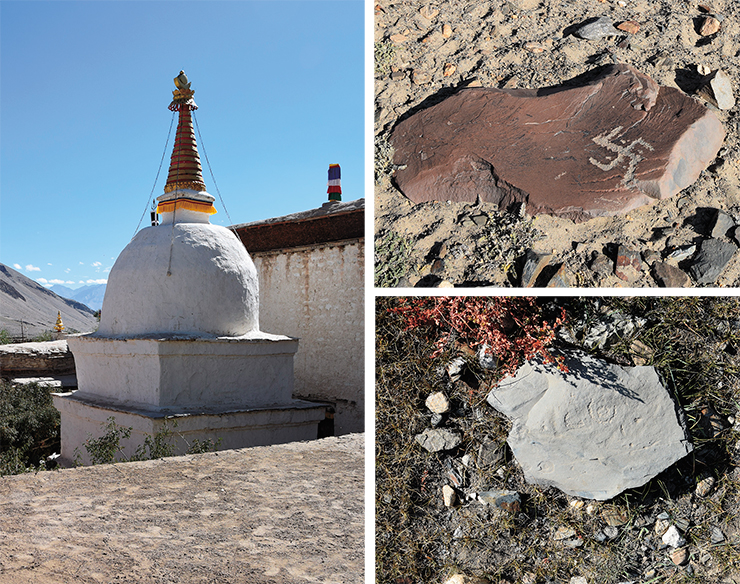
Thus, Brigitte Musche (1987), a specialist in the archaeology of the Middle East, traced a similarity between the Sassanian headdresses depicted on Kushan–Sassanian coins and in rock carvings and the old Tibetan religious cap with a boar’s head, which is stored in the Munich Museum. This cap was brought by the famous orientalist Ernst Schäfer from his 1938—1939 Tibetan expedition; it belonged to a wandering monk “from the west” who had come to Lhasa for a New Year’s holiday. It is known that there were also caps with a raven’s head, like those with a boar’s head, and those caps were also worn by pilgrim monks. According to Musche, “although the use of animals as part of the headdress was a common practice in other parts of the ancient world, e. g., in Egypt, in Assyria, among the Achaemenids and Parthians, and especially among the Sassanids, this item should be considered as part of headdresses and warrior outfit of nomadic peoples, especially the East Iranian ones…”
Three years after publishing this article, Russian archaeologists found in a burial of Pazyryk warriors at Ak-Alakha 1 mound 1 in the Altai Mountains real warrior helmets: felt caps with wooden tops in the form of bird heads. These helmets have much in common with both the Sassanian headgear and the Tibetan cap of a wandering monk. The Pazyryk felt caps bear an even greater resemblance to the caps of Saka warriors depicted in Persepolis bas-reliefs and to the caps of Tibetan lamas, which are essentially the same felt caps with hanging earflaps. Of course, the monks inherited some of the outfit of the Saks, Scythians, Pazyryks. In the Scythian times, these caps served as a marker of East Iranian warriors, herders, and horsemen; this attribute had made its way in an almost unchanged form into the ceremonial costume of Tibetan lamas.
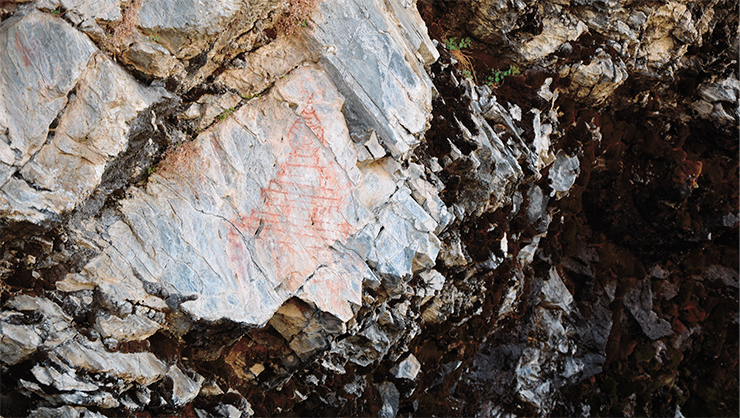
It is possible that mineral-paint drawings were created simultaneously with carvings and engraving on stones. However, these paintings have survived only in caves, under rocky canopies, in secluded places. There were likely more of pictograms in the past, painted on boulders too. It is possible that the bitriangular ibex images were first created with paints on stones; it was only later that ancient artists began to use such techniques as dotted pecking and engraving
Another cultural lineage takes us to China. From written sources we know about the Southern Silk Road, which took its origin at Dunhuang, a city in the Gansu Province, went along the border of the Tarim Depression, and stretched through the Pamir to the northwestern regions of India. We can also recall the alliances that were struck between the Tibetan Qiang and the Xiongnu, when they joined their forces to oppose together the Han Empire. In this regard, noteworthy is the striking similarity between the ceremonies conducted by the Bon priests when concluding peace treaties with other countries and the rituals conducted by the Xiongnu when they concluded treaties (oath agreements) with the Han.
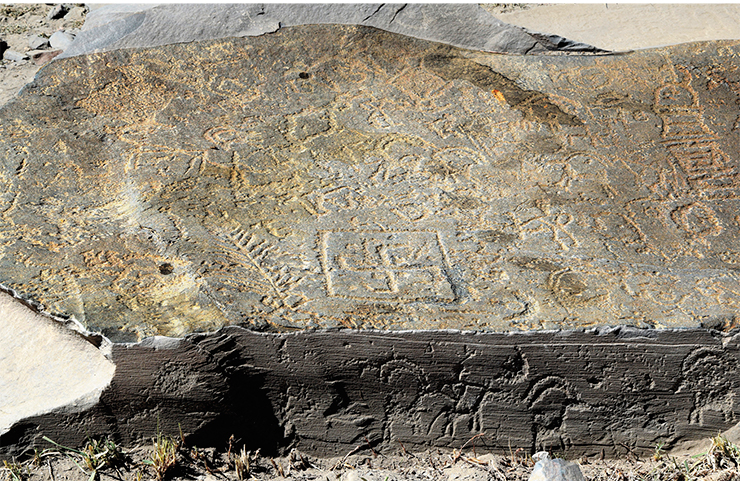
The Bon priests swore in front of a sacrificial altar to the Heavens and Earth, the Sun, Moon and Stars. Simultaneously, an animal was stabbed, and the Tibetans who were present at the conclusion of the treaty smeared their lips with its blood (the 7th century) (Bichurin, 1833). In turn, “the Han’s ambassadors and the shanyu climbed up the mountain, stabbed a white horse and smeared the corners of their mouths with its blood in order to seal the agreement” (the first centuries of the current era) (from Supplementary Notes to the History of the Han; quoted from (Krol’, 2005, p. 160)). The obvious similarity of this custom in Tibet and Mongolia may serve as evidence of the common ancient religious roots of the Central Asian peoples, which Yuri Roerich spoke about as early as at the beginning of the last century.
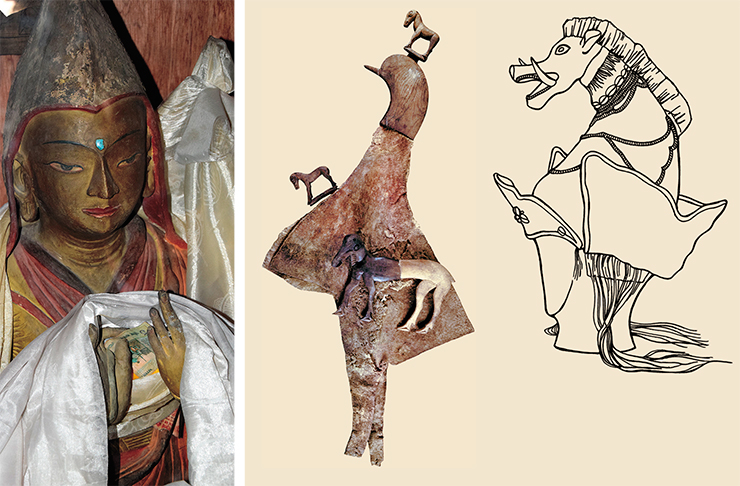
All these observations, as of now scarce and fragmentary, show that the deeper we immerse ourselves into antiquity, the more evidence we find that reveals the unity of the cultural core of the peoples in Central Asia. Much of what once united the tribes and nations on this vast territory has been preserved in the folk religion of the population in such remote and hard-to-reach areas as Zanskar.
References
Bichurin N. Ya. (Hyacinth). Istoriya Tibeta i Khukhunora (History of Tibet and Huhunor). St. Petersburg, 1833. Part 1 [in Russian].
Jettmar K. The Religions of the Hindukush. Aris & Phillips, 1986.
Kislyakov N. A. Burkh – gornyi kozel (Drevnii kul’t v Tadzhikistane) // Sov. Etnograf. Leningrad, 1934. N. 1–2. P. 181–189 [in Russian].
Kislyakov N. A. Okhota tadzhikov doliny reki Khingou – v bytu i v fol’klore // Sov. Etnograf. 1937. N 4. P. 104–119 [in Russian].
Krol’ Yu.L. Otnoshenie imperii i syunnu glazami Ban’ Gu // Strany i narody Vostoka (Countries and Peoples of the East). Moscow: Vostochnaya Literatura Ross. Akad. Nauk, 2005. V. XXXII: Dal’nii Vostok (Far East), Book 4 [in Russian].
Peissel M. Zanskar: The Hidden Kingdom. Dutton, 1979.
Ranov V. A. Begushchie po skalam. Naskal’nye risunki Pamira. (Runners on the Rocks. Rock Art of the Pamir). Dushanbe: Donish, 2016 [in Russian].
Bruneau L. & Bellezza J. V. The Rock Art of Upper Tibet and Ladakh. Inner Asian cultural adaptation, regional differentiation and the ‘Western Tibetan Plateau Style’ // Revue d’Etudes Tibétaines. 2013. № 28 (Dec.). P. 5–161.
Bruneau L., Vernier M. Animal style of the steppes in Ladakh: a presentation of newly discovered petroglyphs // Olivieri L. M., Bruneau L., Ferrandi M. (Eds.) Pictures in transformation: rock art researches between Central Asia and the Subcontinent. Oxford: ArchaeoPress, 2010. P. 27–36.
Frankfort H.-P., Kolodzinski D., Muscle G. Pétroglyphes archaïques du Ladakh et du Zanskar // Arts asiatiques. 1990. T. 45. P. 5–27.
Vernier M. Zamthang, epicentre of Zanskar’s rock art heritage // Revue d’études tibétaines (RET). 2016. P. 53–105.
Vernier M. Exploration et documentation des pétroglyphes du Ladakh: 1996–2006 // HAL Id: hal-01407909 https://hal.archives-ouvertes.fr/hal-01407909
Vernier M. Exploration et documentation des pétroglyphes du Ladakh: 1996–2006. Préface de H.-P. Francfort, Review par J. Bray, Sierre, Fondation Carlo Leone et Mariena Montandon. Como: Nodo Libri, 2007. 83 p.
The research was carried out under the grant “Archaeological studies of migration routes from Central Asia to Kashmir” AZ 16/BE/15, with the financial support of the Gerda Henkel Stiftung Foundation


